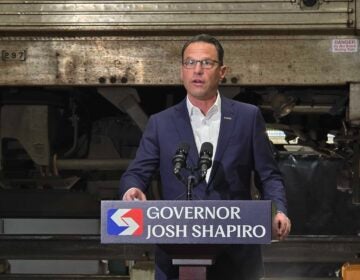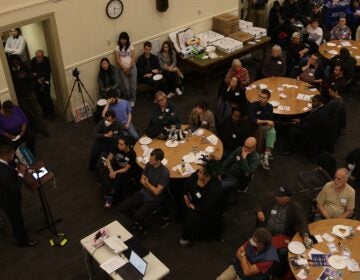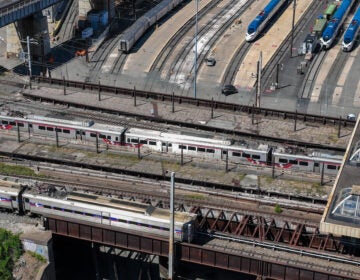Planning Commission, SEPTA offer vision of improved trails and transit along the Wissahickon
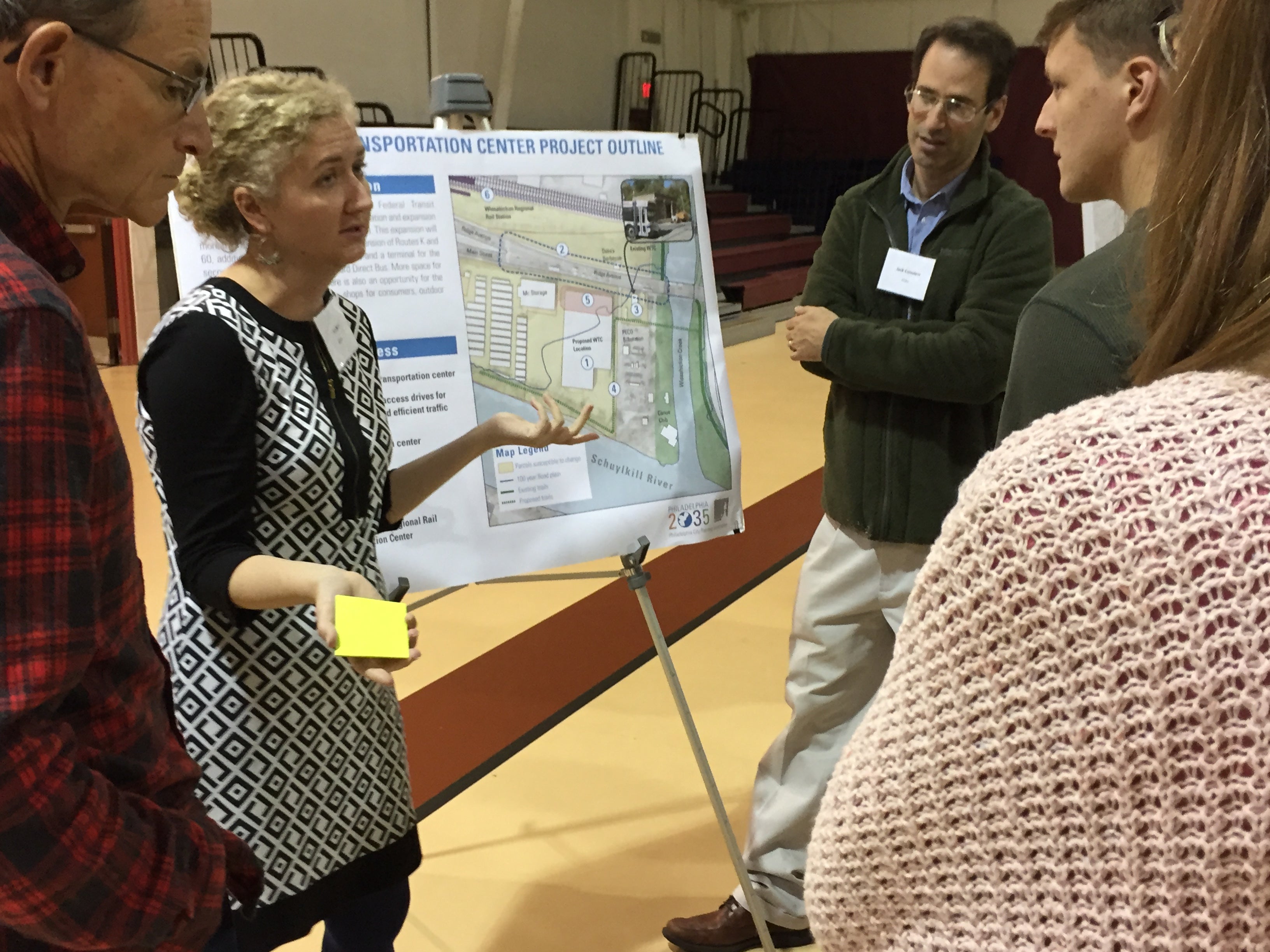
In the coming years, one of SEPTA’s busiest transportation facilities could see an overhaul while the Schuylkill River Trail may, finally, connect through Manayunk, thanks to the Wissahickon Gateway Plan.
On Monday, residents were able to discuss the Wissahickon Gateway Multi-Modal Improvement Plan at an open-house at the Gustine Rec Center in East Falls.Philadelphia City Planning Commission staff presented the plan as an effort to not only improve the Wissahickon Transportation Center, but also create a connection for the Schuylkill River Trail along a stretch of riverfront that is currently inaccessible, forcing hikers and bikers alike onto Manayunk’s Main Street for a mile-long stretch.
“It’s great to see some ideas to improve this,” said Eric Dahlberg, a Wissahickon resident who said he’s biked in the area for more than 25 years. “People stop and ask me all the time about the [Schuylkill River Trail] and right now, it just ends.”
Dahlberg said he hopes the riverfront trails will connect Kelly Drive-adjacent trail to the Manayunk Canal Towpath along Lock Street in Manayunk.
“That would be great,” he said.
While the plan, funded through a $100,000 Transportation and Community Development Initiative grant from the Delaware Valley Regional Planning Commission, is still in its infancy — the 12-month plan only launched this summer and Monday’s gathering was the first public meeting on the plan — Matt Wysong, a senior planner at the planning commission, said the plan coordinates, “a few different public improvement projects that are going to be happening over the next five or ten years.”
“Really, the genesis of this idea for the gateway goes back almost ten years to some community-initiated plans to look at this area,” he said in a recent interview.
In fact, Carolyn Sutton, of the East Falls Development Corporation, said the community has been looking to fix the area around the Wissahickon Transportation Center since at least 2008.
“It’s a real nightmare of activity there with no sense of how to make it better for anybody,” said Sutton.
The Wissahickon Gateway Plan hopes to implement elements of the 2008 Ridge Avenue Gateway Plan, that aimed at improving transit service and pedestrian and bicyclist safety around transportation center as well as the 2013 Schuylkill River Trail Gap Analysis Plan intended to help close the gap in the trail through Manayunk and the 2014 Lower Northwest District Plan that looked at how added investment in the area could benefit the whole city.
The gateway plan focuses initially on proposed improvements to SEPTA’s transportation center, a way station for passengers transferring between suburban and city buses that sits on Ridge Avenue across from an entrance to the Wissahickon Valley Park.
“That’s going to be the first domino to fall,” said Wysong. “That will be the first thing that you see going into the ground. I’d say, around the same time, you’d see some improvements going on around Ridge Avenue related to sorting out traffic. After that, then you’ll see the Schuylkill River Trail improvements start to go in.”
SEPTA secured a $4 million grant from the Federal Transit Administration for improvements, said spokesman Andrew Busch.
That money will only cover part of the project’s estimated $13.3 million price tag for completely rebuilding the well-worn structure there today.
According to Busch, the Wissahickon Transportation Center is “one of SEPTA’s busiest transportation facilities, with 11 bus routes serving approximately 7,000 riders each weekday.”
The initial plans call for expanding the bus facility in the hopes of alleviating nearby congestion while also creating a new passenger waiting area. Buses waiting to turn into the bus loop there can often sit on Ridge, blocking traffic in and out of Manayunk and Roxborough.
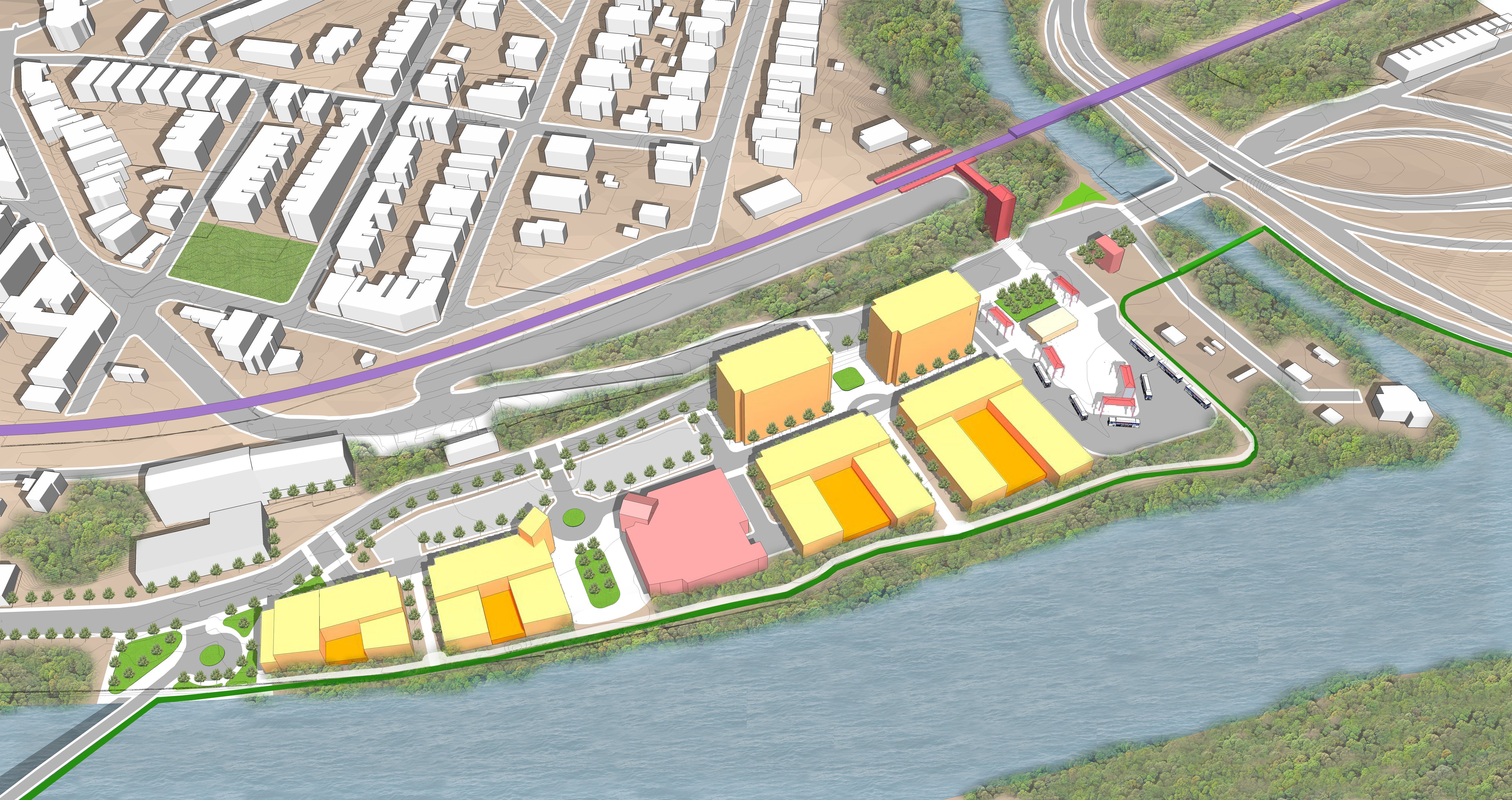
“It just doesn’t work,” said Jennifer Barr, a planner at SEPTA. “We are doing okay with what we have, but it could be improved.”
The facility also fails bus drivers, who need a place to eat lunch, take a break, and use the restroom in between their route runs, Barr noted.
Along with an expansion of the transportation center, Barr said SEPTA is also planning to more than double bus service by extending Routes K and 60, adding additional service for Routes 124 and 125, as well as adding in a terminal for the second phase of the Roosevelt Boulevard Direct Bus, a new route running an express service along its eponymous thoroughfare SEPTA hopes to one day extend the route, which current runs between the Frankford Transportation Center and the Neshaminy Mall, to the Wissahickon Transportation Center.
“We want to help organize this whole area,” said Barr.
Right now, Barr said, SEPTA is looking at the needs of riders who use the transportation center and determining the best ways to improve the area for commuters. There is no prospective design yet for the new Wissahickon Transportation Center, nor is there a firm date for when construction there could begin. In fact, she said, SEPTA is still working to purchase the land next to the bus loop needed for the expansion project. That building is currently home to Cadence Cycling and an empty storefront.
Some of the renderings at Monday’s meeting also offered a glimpse of longer-term plans to connect the transportation center’s bus loop with the nearby Wissahickon Station on the Manayunk/Norristown Regional Rail line: a crosswalk over Ridge Avenue to an elevator between the two transportation nodes.
While a physical connection between Regional Rail and the bus transportation center are issues planners hope to eventually address, Wysong said that a physical connection between those stations is more of “a long-term goal.”
According to Barr, the elevator wouldn’t be included in the renovations to the Wissahickon Transportation Center and wouldn’t be covered by the $4 million grant SEPTA has secured for the center. But, there are hopes of adding some sort of ADA-compliant connection between the bus loop and the train station as a separate project in subsequent years.
That might not happen for some time, however, as the project is not currently included SEPTA’s 12-year capital program, which sets out SEPTA’s long-term plan for major rehabilitation and improvement projects.
As for the Schuylkill River Trail, Wysong said that organizers are hoping to connect the gap that interrupts the 130-mile-long trail.
The plan hopes to create new waterfront trails that would run behind the shopping center and movie theater complex on Main Street to provide better access to the Schuylkill River.
The plan calls for a new pedestrian bridge to be built over the Wissahickon Creek just a few yards down from the Ridge Avenue crossing to allow pedestrians and cyclists on the trail to avoid the busy roadway altogether.
“I’m really excited about that bike trail,” said David Ruben, of Center City, who said he often rides his bike down Kelly Drive. “I like intermodal activity… this is a really unique site.”
Ruben, along with Stephen Gibson of Mount Airy, said they liked the idea of bringing a riverfront trail to that part of the Schuylkill River because it would not only allow bike riders a scenic view of the waterfront, but could help bring new businesses and development to the area.
The plan’s stated “ultimate goal” is to “position the Wissahickon Gateway as a multi-model center anchored by a relocated and expanded Wissahickon Transportation Center and strengthened by new transit-oriented development, waterfront access, street right-of-way improvement and trail amenities.”
Wysong said that the new development and placemaking won’t likely start to happen after the Schuylkill River Trail improvements are complete, though they are still working out just how the future phases of the plan will come together.
“One of the things we are still trying to hone, in this project, is that sequencing and what needs to happen before the next thing can happen,” he said.
The Philadelphia City Planning Commission is still seeking input from anyone who would like to share their input on the Wissahickon Gateway Plan. If you’d like to share your thoughts, take the survey at bitly.com/wissgateway and, for more information on the plan, visit phila2035.org.
WHYY is your source for fact-based, in-depth journalism and information. As a nonprofit organization, we rely on financial support from readers like you. Please give today.





